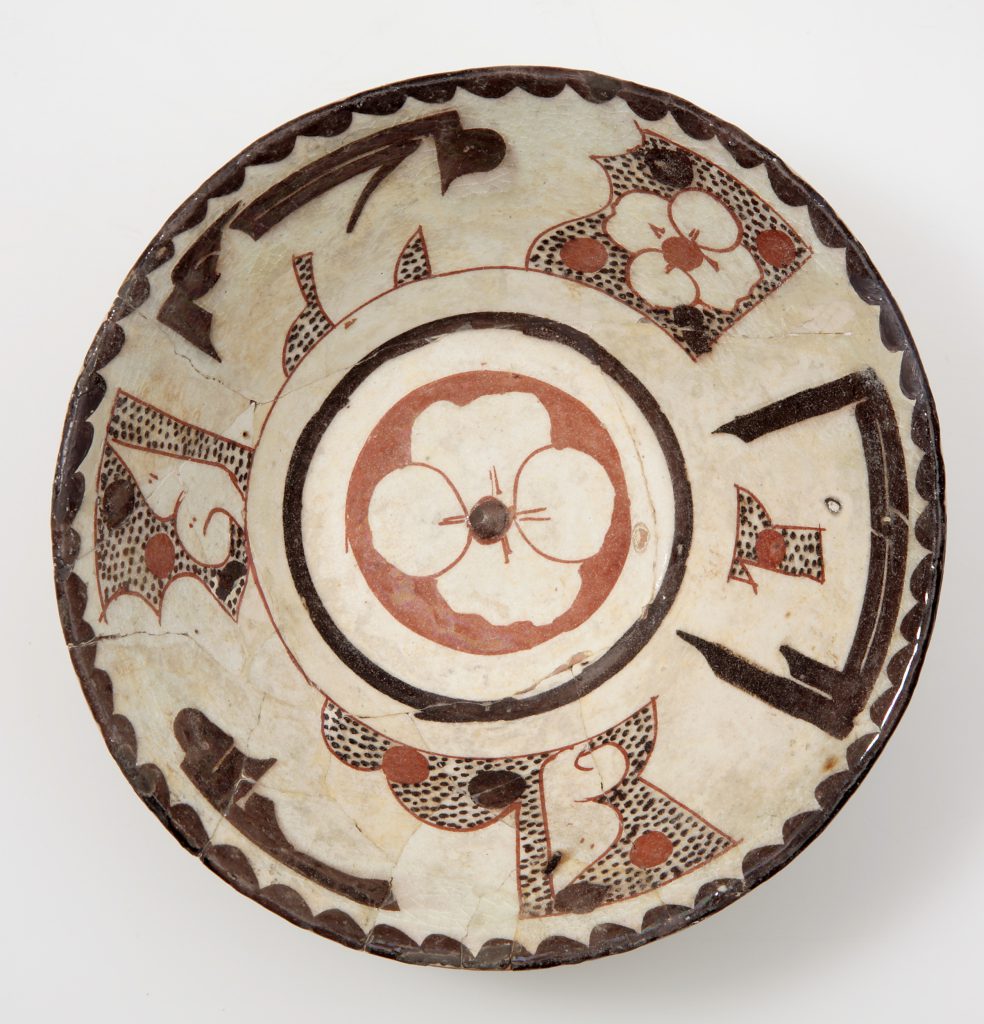



Title: Bowl with Inscription
Date: 10th century AD
Location: Afrasiyab (old Samarkand), Central Asia
Materials: earthenware, painted with red and purplish-black slips under a colourless glaze
Dimensions: 4.8 x 14.5cm
Accession Number: POT 686
Other Notes:
The inscription, which is in a handsome book hand of about a century earlier reads,barakah li-sahibihi (‘Blessing to its owner’). Its distinction lies in the fact that it is written in irregular compartments defined by small irregularly-shaped dotted panels. These ‘clouds’ were later adopted in Qur’anic illumination and, subsequently, became almost standard in the layout of the holy text.
Bibliography:
E.J. Grube et al, Cobalt and Lustre. The First Centuries of Islamic Pottery, The Nasser D Khalili Collection of Islamic Art, volume IX, London 1994, cat.70, p.80.
J.M. Rogers, The Arts of Islam. Masterpieces from the Khalili Collection, London 2010, cat.39, pp.52–3.
Zoom
Close

Create your own collection of artworks that you can print or save as a PDF. Please enter you email to enable feature.
Small Flask | JLY 1075
Has been added to your collection.
TIP:
You can now access and view your collection from the main menu at any time.